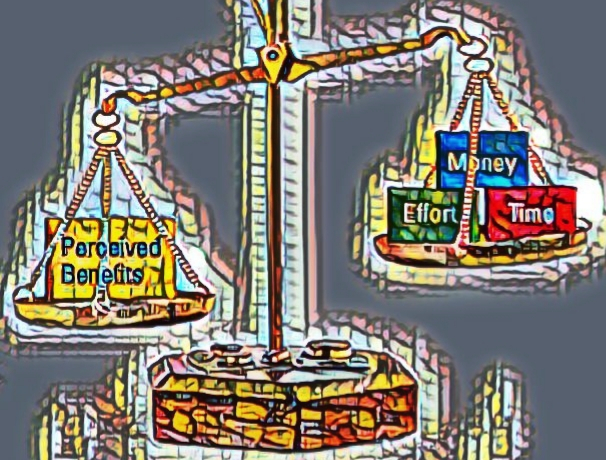Is it possible to define Value? How can we measure it? Is there a way to calculate what our products/services worth to our customers? Nowadays, the ability to pinpoint the value of our offerings to our clients has never been more vital. Moreover, we constantly hear from organisations about the importance of value propositions, but according to Frow & Payne, less than 10% of enterprises have developed and communicated in a successful way an actual value proposition.
In general, as Lanning & Michaels (1988) point out, clients eventually choose the product/service, which they think that is of superior value (benefits minus price) compared to the competing alternatives. With regards to these two major criteria, the benefits that matter are those that the customer (and not the supplier) thinks that are important, while regarding price, it is whatever the client sees as being paid for the product or service (money, time, effort). Therefore, if benefits outweigh the price, then the value represented is on the positive side.
Going back to value propositions, most companies when asked to construct one, they simply make a list of all the benefits that they believe that their product/service may deliver to their clients. This approach requires the least amount of work, since minimal knowledge about customers and competition is needed. The result is just a lot of assumptions with no value being actually proposed.
In order to structure a successful value proposition there is serious work to be done, starting by answering a number of questions such as: What are the customers asking for? Is our value superior than the offering of a competitor? Will the clients going to be able to profit from our value proposition? What is the impact that our value proposition is going to have on our customer and on the customer’s customer? Moreover, market analysis and segmentation, assessment of opportunities to deliver superior value per segment and finally making a choice of the value proposition which optimises these opportunities is the way to structure a value proposition according to Lanning & Michaels, who back in 1988 were the first to introduce this term.
As we said, customers choose the offering that they think is of superior value, therefore we need to understand that “a business is a system of superior value delivery”. Once a value proposition is chosen and communicated to the client, then the whole organisation should work towards delivering the proposed value to the customer, in the most profitable way for the company.



